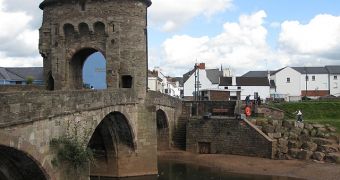Wikipedia is venturing into new areas, now that the core site is well established. While new content is always coming in and existing one is being updated, the bigger challenge is to make that content available to all and to make it accessible in places and situations where it could prove really useful.
Wikipedia is trying to tie the site to the real world more and it's doing this via QR codes. The idea is, QR codes places at various locations could lead smartphone users to the Wikipedia page relevant to the place.
The site already has the technology to do this and is now embarking on the first large scale experiment of this sort, partnering with the small British town of Monmouth.
In the experiment, the town's many interesting locations will be dotted with QR codes offering additional information. Tourists would only have to point their phones at the codes and they will be directed to the relevant page.
That page may be a description of the building, its historical significance, the important people that left their mark there and so on.
At this stage, Wikipedia is looking for people around the area to create all the useful pages. The plan is to have some 1,000 QR codes across town by April next year.
One interesting thing about Wikipedia's QR codes is that they automatically detect the language used by the phones and redirect users to the relevant page in their language. Of course, not all local Wikipedia's have enough content for this to be possible for every page, but it's still an interesting addition.
Wikipedia has already experimented with using QR codes in real locations, it has them in several museums for example, but this project will be significantly bigger. What's more, it will also be more useful as it will offer information in places where there may be none on the site, like there is in museums.

 14 DAY TRIAL //
14 DAY TRIAL //